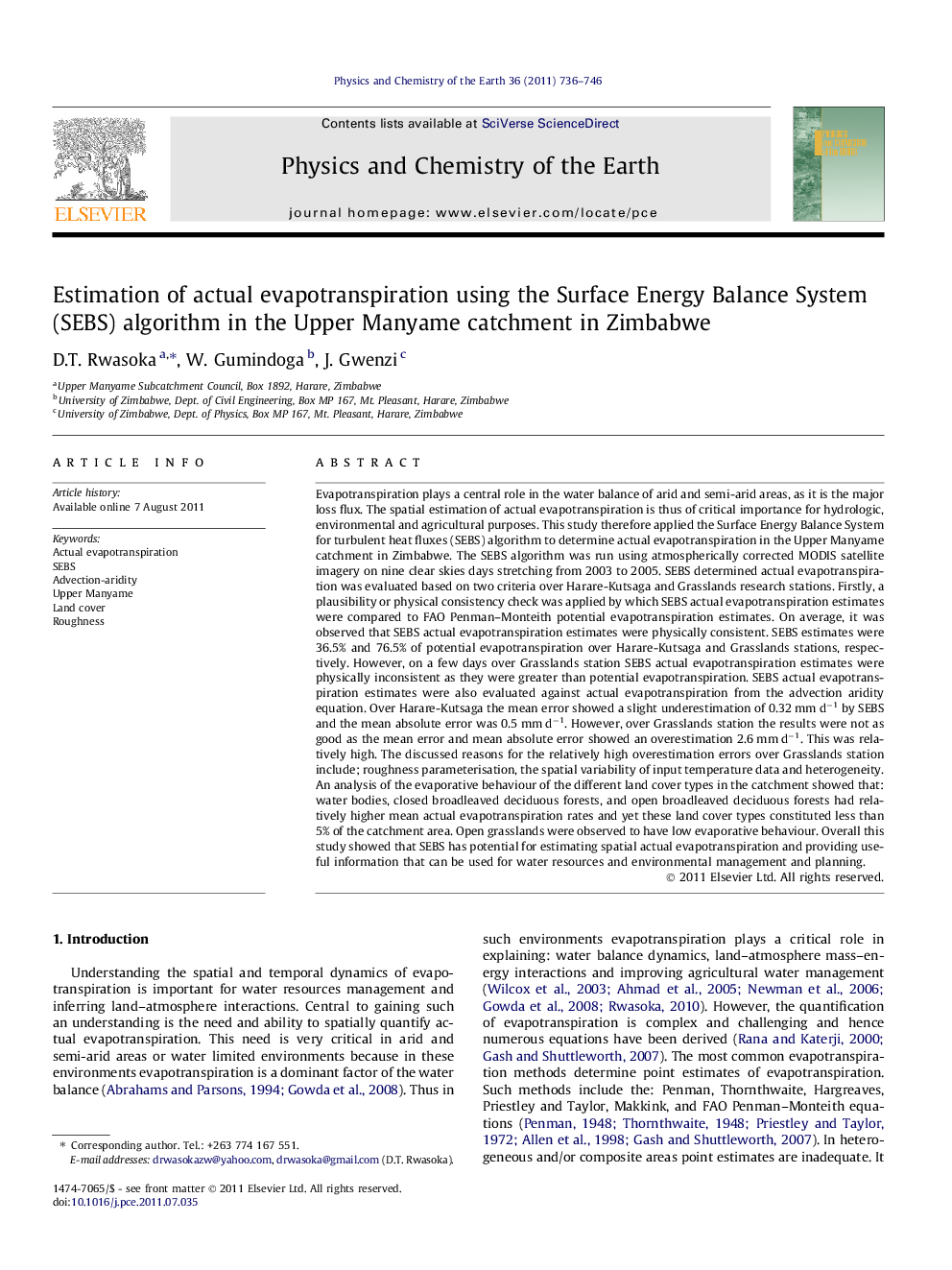| کد مقاله | کد نشریه | سال انتشار | مقاله انگلیسی | نسخه تمام متن |
|---|---|---|---|---|
| 4721288 | 1639374 | 2011 | 11 صفحه PDF | دانلود رایگان |

Evapotranspiration plays a central role in the water balance of arid and semi-arid areas, as it is the major loss flux. The spatial estimation of actual evapotranspiration is thus of critical importance for hydrologic, environmental and agricultural purposes. This study therefore applied the Surface Energy Balance System for turbulent heat fluxes (SEBS) algorithm to determine actual evapotranspiration in the Upper Manyame catchment in Zimbabwe. The SEBS algorithm was run using atmospherically corrected MODIS satellite imagery on nine clear skies days stretching from 2003 to 2005. SEBS determined actual evapotranspiration was evaluated based on two criteria over Harare-Kutsaga and Grasslands research stations. Firstly, a plausibility or physical consistency check was applied by which SEBS actual evapotranspiration estimates were compared to FAO Penman–Monteith potential evapotranspiration estimates. On average, it was observed that SEBS actual evapotranspiration estimates were physically consistent. SEBS estimates were 36.5% and 76.5% of potential evapotranspiration over Harare-Kutsaga and Grasslands stations, respectively. However, on a few days over Grasslands station SEBS actual evapotranspiration estimates were physically inconsistent as they were greater than potential evapotranspiration. SEBS actual evapotranspiration estimates were also evaluated against actual evapotranspiration from the advection aridity equation. Over Harare-Kutsaga the mean error showed a slight underestimation of 0.32 mm d−1 by SEBS and the mean absolute error was 0.5 mm d−1. However, over Grasslands station the results were not as good as the mean error and mean absolute error showed an overestimation 2.6 mm d−1. This was relatively high. The discussed reasons for the relatively high overestimation errors over Grasslands station include; roughness parameterisation, the spatial variability of input temperature data and heterogeneity. An analysis of the evaporative behaviour of the different land cover types in the catchment showed that: water bodies, closed broadleaved deciduous forests, and open broadleaved deciduous forests had relatively higher mean actual evapotranspiration rates and yet these land cover types constituted less than 5% of the catchment area. Open grasslands were observed to have low evaporative behaviour. Overall this study showed that SEBS has potential for estimating spatial actual evapotranspiration and providing useful information that can be used for water resources and environmental management and planning.
► We evaluated spatial actual evapotranspiration by SEBS over Upper Manyame catchment.
► Over two evaluation stations, SEBS overestimated by 0.32 mm d−1 and 2.6 mm d−1.
► On a few days over Grasslands station, SEBS ET was higher than potential evapotranspiration.
► The reasons argued were: roughness parameterisation, input temperature and heterogeneity.
► Land cover types that constituted less than 5% of the catchment had higher mean ET.
Journal: Physics and Chemistry of the Earth, Parts A/B/C - Volume 36, Issues 14–15, 2011, Pages 736–746